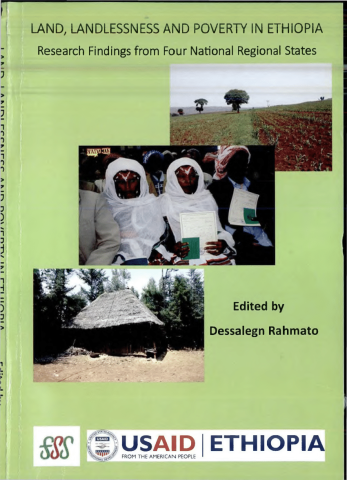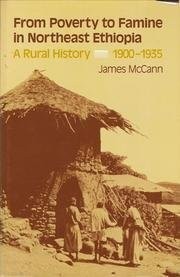Emerging out of a 2016 workshop organized by the Forum for Social Studies in Addis Ababa (also the publisher of the book), the 2018 publication "Land, Landlessness and Poverty in Ethiopia" presents cases / chapters from four regions in Ethiopia (SNNP, Amhara, Oromia, Tigray). The book is edited by Dessalegn Rahmato, and covers a topic he has been alerting our attention to for several years - landlessness. The full book is available for download here. Notes from the Introduction by Dessalegn:
"Landlessness is an important subject for close examination because it is an overarching problem with implications for poverty, social stability and the environment. Despite this, however, it has not attracted serious investigation and there are not many in-depth analyses of the subject and its ramifications. The problem is in large measure a product of demographic pressure, land scarcity and the insufficiency of access to non-farm employment in the rural areas. Landlessness is now growing to be a significant problem, and, in some of the densely settled communities, it has reached crisis levels, causing serious concern among kebelle and woreda authorities. The problem is an indicator of poverty, and no program of poverty reduction can succeed without addressing it in a meaningful way. There is a generational factor at work here: the tenure regime in place disadvantages young peasants who, by law, should have been provided farm plots by the kebelles concerned but are not because there is no arable land to distribute. This generational divide has the potential to erode social stability and cohesion. As is discussed by all the researchers in their work, the response of the young to landlessness has been varied but of particular significance has been the phenomenon of out-migration from the rural areas. Such migration may be to bigger urban centers in search of employment (this is evident in Addis Ababa), but the migration that has drawn public attention because of the dangers involved is the illegal migration to foreign countries such as the Middle East and South Africa and the victimization of would-be migrants by people smugglers and the human tragedy it has caused." (p. 4)
"Landlessness is a serious and growing problem in all rural areas, and yet it has not been given the attention it deserves by local authorities. For the purposes of the study, the following definition of landlessness was adopted by the research teams: any individual living in a rural community who has no rights to land registered in his or her name is considered landless. Having temporary access to land under a rental arrangement does not disqualify the person in question from being described as landless. In many cases, a landless person has no access to land of any kind, no employment and no income. The first point to bear in mind is that landlessness is at the heart of the generational fault-line facing rural society. Invariably, those suffering from the misfortune of having no rights to land are the young, and young males appear in the picture more prominently than young females. The major factors that were found to be responsible for rising landlessness included demographic change and consequent land shortage; large-scale investments in commercial agriculture, manufacturing and infrastructure; land degradation; and the paucity of non-farm (or off-farm) employment opportunities." (p. 6)




